From Valdez to Chistochina
August 30, 1992
We left Valdez on Sunday morning and drove eastward on the Richardson Highway. Our traveling companions were Max and Anita Hardie. We spent some time just east of Valdez watching silver salmon actually spawning in the shallow water of the stream.
| Spawning was necessary at this point since tall waterfalls up the steep mountain lay just ahead. We watched the female lie on her side and flip, discharging dozens of clearly visible "salmon colored" eggs onto the rocky streambed. The male would move in to cover them with milt, and then bite and drive off any other males. Some of the eggs would drift downstream to be snapped up by the waiting gulls. The water fall is Horsetail Falls in Keystone Canyon a few miles out of Valdez. 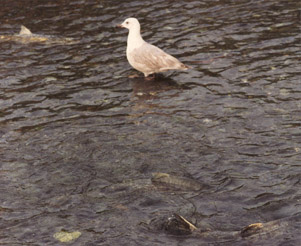 | 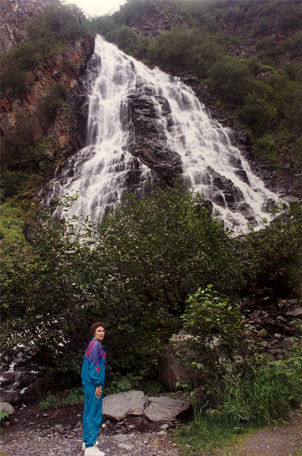 |
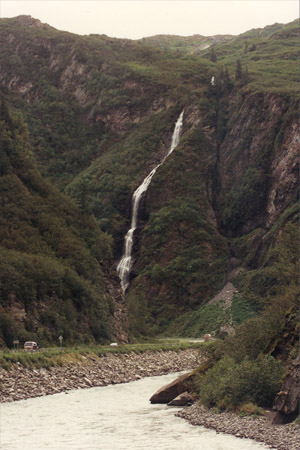 | 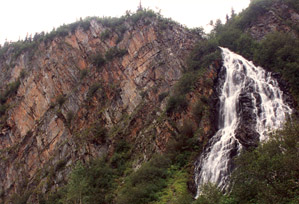 The image above gives a little more insight into why this waterfall is named the Horsetail Falls. Here you even have the rear end of the horse. At left is a more delicate high waterfall called the Bridal Veil Fall. This view includes the road and the river through Keystone Canyon. Below is another view of the Bridal Veil and another waterfall. The height and steepness of these cascades makes it evident why even the persistent salmon can go no further and must do their spawning here. |

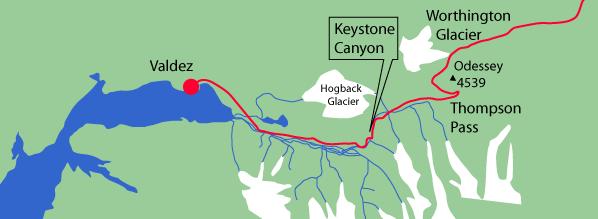
The inset images below give some of the character of the road through Keystone Canyon and up Thompson Pass. Most mountains had glaciers, and from the lower ends of those glaciers ran streams. Here we began to see the coloration of the foliage that predicted that autumn was upon us at the end of August.

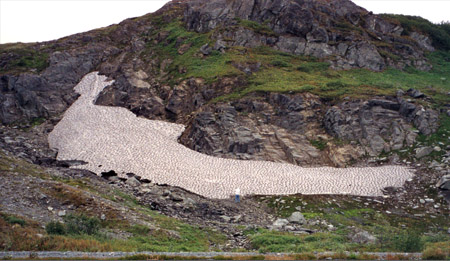 | Near the summit of Thompson Pass we found patches of gray snow from the volcanic ash - this is about 220 miles from Mt. Spurr! And we got none in Kenai which is only 50 miles from the volcano. |
| Rod climbed up the hill to examine the dirty snow more closely. | 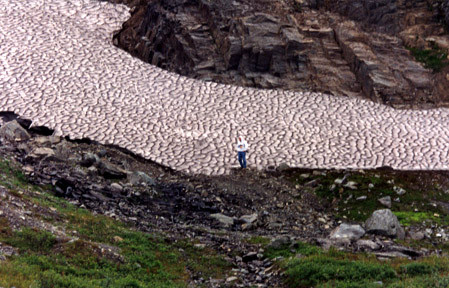 |
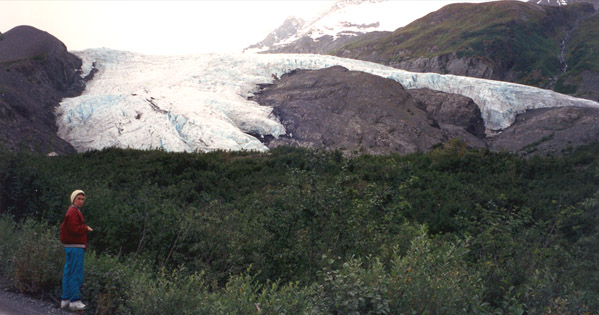
| We stopped to look at Worthington Glacier, which is just past the summit of Thompson Pass. It is said to be the most visited glacier in Alaska, with some 300,000 annual visitors. That is more than half the population of Alaska. You can see that we are seated on a bench at the roadside, and the glacier is just behind us.  |  |
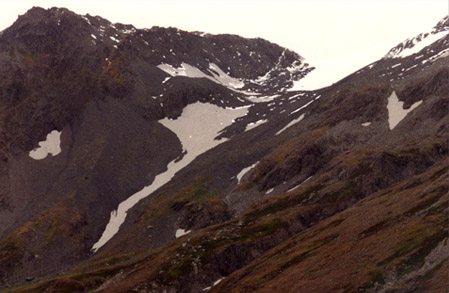 | This is a striking example of volcanic ash near Thompson Pass. The high saddle of the mountain has fresh, gleaming-white snow while the snow patch below it is distinctly gray with ash from the Mt. Spurr eruption 12 days ago. |

 | We moved quickly on through the pleasant mountainous country. We were headed north and saw more and more prominent fall colors in the foliage. It was cloudy, so we couldn't see the distant Wrangell Mountains. This view is of the Copper River at Gakona Junction. |
ChistochinoHaving driven up the Glenn Highway toward Tok, we stopped in at the Chistochino Lodge to spend the night. It was a structure from the early part of the century and one of the old roadhouses. Chistochina reportedly had a population of 43, but that included a 50 mile radius. Logs, furs, showshoes - a picturesque rustic setting. These roadhouses combine restaurant, bar, recreation room, sitting room, a few rooms (5) and a campground outside. We were upstairs, and the bathroom was downstairs. The beds were so bad that we drug the mattress off onto the floor to sleep. But it was an interesting experience. We were told later that there is not a nicer place to stay between Gakona and Tok, about 140 miles. | 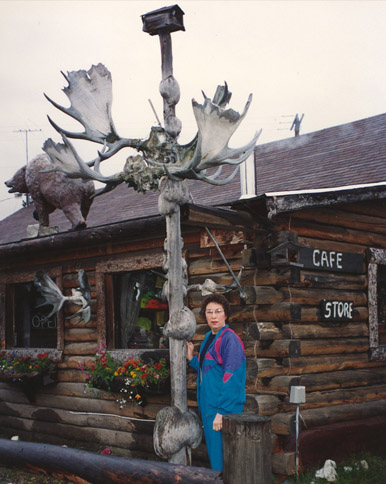 |

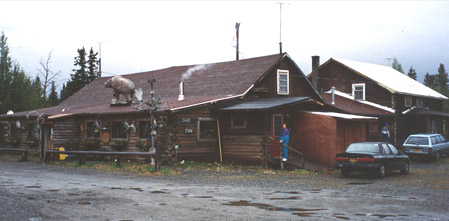 | The Chistochino lodge is a log structure with a tin roof, seen at back of the entrance log structure. The pouring rain on the metal roof during the night was a pleasant sound to me. Although there were the typical hot water heaters in our rooms, the restaurant area was heated by a wood stove. |

 | This is the Chistochina airport - a dirt airstrip out beside the lodge. We watched Ron, our cook and waiter the night before, take off in this small plane for Anchorage. He commented that it was 240 miles to Anchorage and you didn't cross any roads. That was a slight exaggeration since you did have to cross over the Richardson Highway, but it probably was true that you crossed only that one paved road on the flight. |
Chistochina, a great place to raise boys!
We had an interesting experience in Chistochina, a place we had never heard of before this summer. When we got to Anchorage, we met a couple whom Curtis Martin knew. They responded very enthusiastically when we mentioned that we had spent a night in Chistochina. They had lived there for a number of years and raised three or four sons there I believe. Their assessement was that it was a great place to raise boys to become self-reliant, strong men. The boys had to ride the bus almost 50 miles to school in the Gakona area, unless of course the temperature was less than -59°F. If the temperature was less than -59°F they called off school because the oil in the school busses froze. They said their boys always looked forward to the days when it was lower than -59°F because then they could stay home and play hockey in the backyard. With that kind of tale, we conceded that it was a place where one might raise hardy young men.
| To the Matanuska Valley |
1992